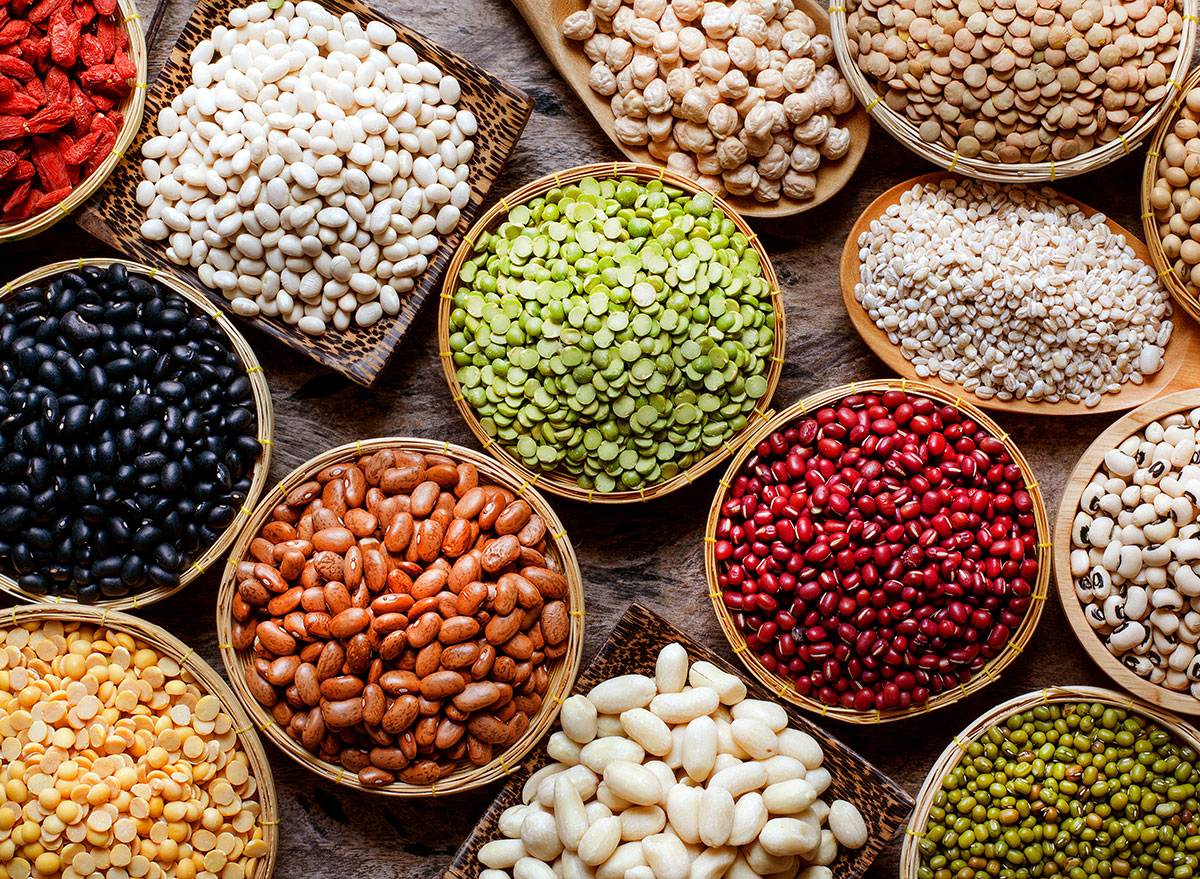1. Lentils
Polyphenols, found in plants, have anti-inflammatory and antioxidant effects and are abundant in lentils. According to a 2021 review published in Nutrients, higher intakes of polyphenols have been linked to a lower risk of diseases like diabetes, heart disease, and certain types of cancer.
The nutritional value of lentils is similarly high. The nutritional profile of cooked lentils is as follows: 115 calories, 20 grams of carbohydrate, 9 grams of protein, 8 grams of fiber (29% of the Daily Value), and 0 grams of saturated fat per half cup portion. The prebiotic carbohydrates in lentils were emphasized in a review of their health advantages published in the International Journal of Molecular Sciences. Prebiotics improve gut microbiome health by feeding the healthy bacteria already there. Having a diversified microbiome has been linked to a lower risk of cancer, a stronger immune system, and the prevention of gastrointestinal illnesses.
2. White Beans
There are a number of different white bean kinds, each with its own somewhat different size and flavor profile. Cannellini beans, butter beans (lima beans), navy beans, and great northern beans are some of the most popular varieties. The potassium, calcium, folate, and iron content of white beans is especially high. Around 125 calories, 22 grams of carbohydrates, 9 grams of protein, 6 grams of fiber, 500 milligrams of potassium (11% DV), 80 milligrams of calcium (8% DV), 73 micrograms of folate (18% DV), and 3.3 milligrams of iron (18% DV) may be found in a half cup portion of white beans. A half cup serving contains more potassium than a medium banana, according to the USDA’s food database.
3. Black Beans
Vitamins, minerals, and antioxidants can all be found in black beans. They complement any diet, but particularly those that focus on plants (vegan, vegetarian, flexitarian, etc.) because of their high protein and fiber content.
:max_bytes(150000):strip_icc()/GettyImages-157280489-8c2e8608ee9f4f9abb38f000f633ebc7.jpg)
Black beans contain 120 calories, 21 grams of carbohydrates, 6 grams of fiber, 8 grams of protein, 40 milligrams of calcium (3% DV), 17 milligrams of iron (17% DV), and 28 milligrams of choline (5% DV), as reported by the United States Department of Agriculture.
Choline is an essential ingredient for building cell membranes, the protective coverings of your body’s individual cells. According to the National Institute of Health’s Office of Dietary Supplements, your brain and nervous system rely on it to help regulate your mood and manage muscle contractions. Pregnant women, nursing mothers, and those attempting to conceive all benefit greatly from enough choline intake.
4. Chickpeas
The glycemic load of beans like chickpeas is quite low. Simply put, this means that they are less likely to trigger a spike and subsequent drop in blood sugar levels than foods high in refined carbohydrates or added sugars. The combination of their high fiber and protein content might keep you feeling fuller for longer. This may be one explanation for the link between a high-fiber diet and successful weight management.
ALSO READ: Best TOSHIBA TV In India: Top 3 Smart TV Sets For Budget Buyers
Chickpeas and other legumes are great additions to a diabetes-friendly diet because of the high fiber and protein content. In a 2018 review published in Current Diabetes Reports, researchers found that a diet rich in vegetables, whole grains, legumes, and nuts reduced the risk of insulin resistance and type 2 diabetes and improved glycemic control in all of the people studied.
5. Pinto Beans
There’s a good reason why pinto beans are so widely consumed. More than 28% of your daily fiber needs are met by just 1/2 cup of this, which contains 8 grams of fiber. Fiber, a type of carbohydrate that cannot be digested, has been shown to reduce blood cholesterol levels, promote good digestion, maintain stable blood sugar levels, and increase feelings of fullness. The folate content of pinto beans is about 33% of the daily value, and they also include significant amounts of magnesium, copper, thiamine, iron, potassium, and vitamin B6.
Meatless sloppy Joes, burrito bowls, quesadillas, wraps, grains, vegetables, and soups all benefit from the addition of pinto beans.
6. Red Kidney Beans
Commonly found in meals like chili, rice, and bean stew, red kidney beans are an excellent vegan source of iron. One half cup serving provides 14% of the daily value for iron at 2.6 mg.

The creation of red blood cells, as well as growth, hormone synthesis, brain development, and cell function, all require iron. The non-heme iron found in red kidney beans is not as accessible (readily absorbed by the body) as the heme iron found in meat and other animal products. Red kidney beans contain non-heme iron, which is more easily absorbed when consumed alongside vitamin C-rich foods like fruits and vegetables.
7. Lupini Beans
Lupini beans are one of the best plant-based sources of protein, with 13 grams per half-cup serving (almost the same as 2 ounces of meat). Their portability and high fiber and protein content make them a popular snack option.
The protein and zinc (1.11 mg, or about 14% DV) and magnesium (45 mg, or about 14% DV) in lupini beans make them a healthy complement to any diet. Zinc plays a crucial role in the body’s immune system, wound healing, and overall cellular health. More than 300 enzyme systems rely on magnesium as a cofactor, and these enzymes are responsible for a wide variety of physiological processes, including the regulation of muscle and nerve function, protein synthesis, and blood pressure.






